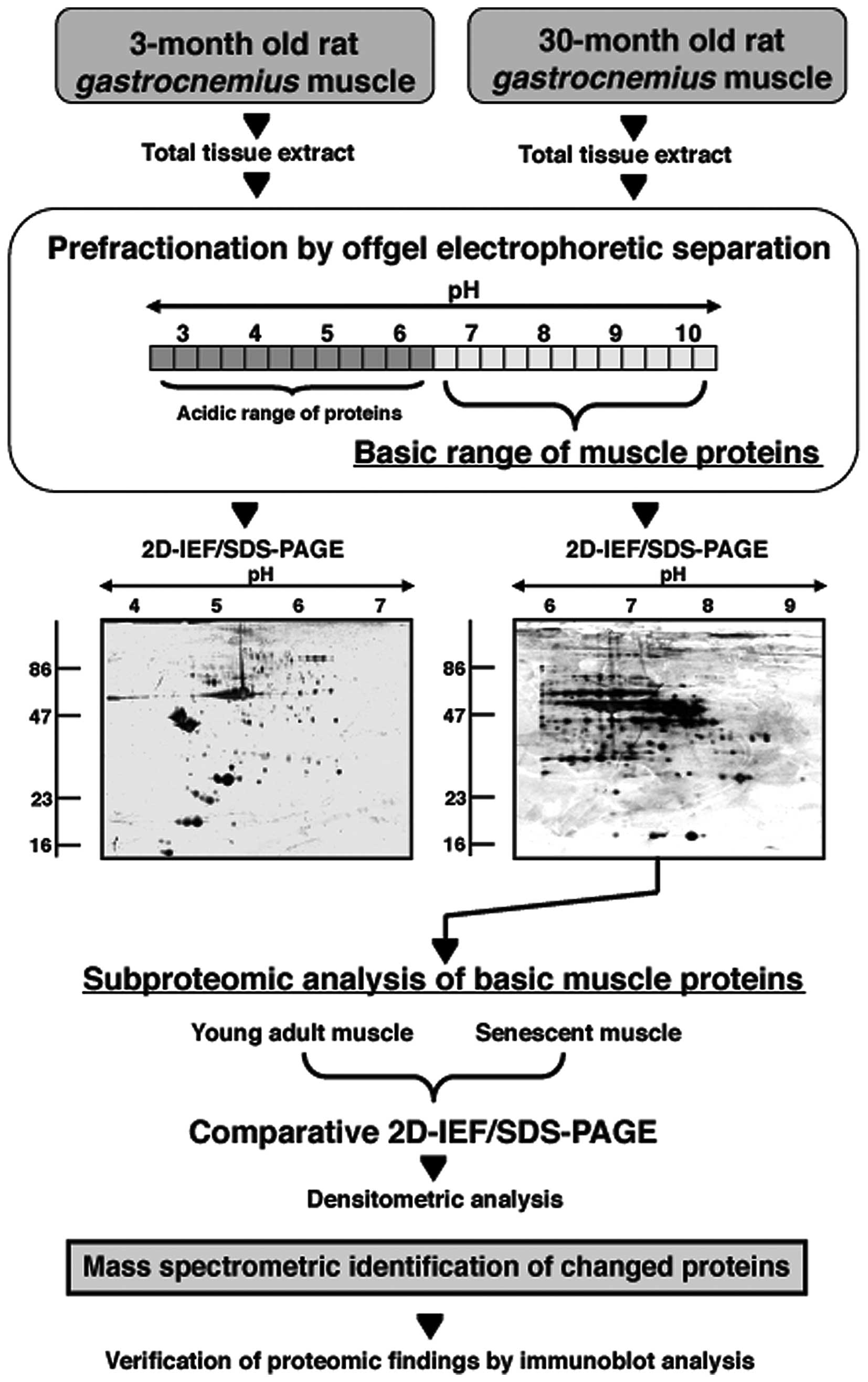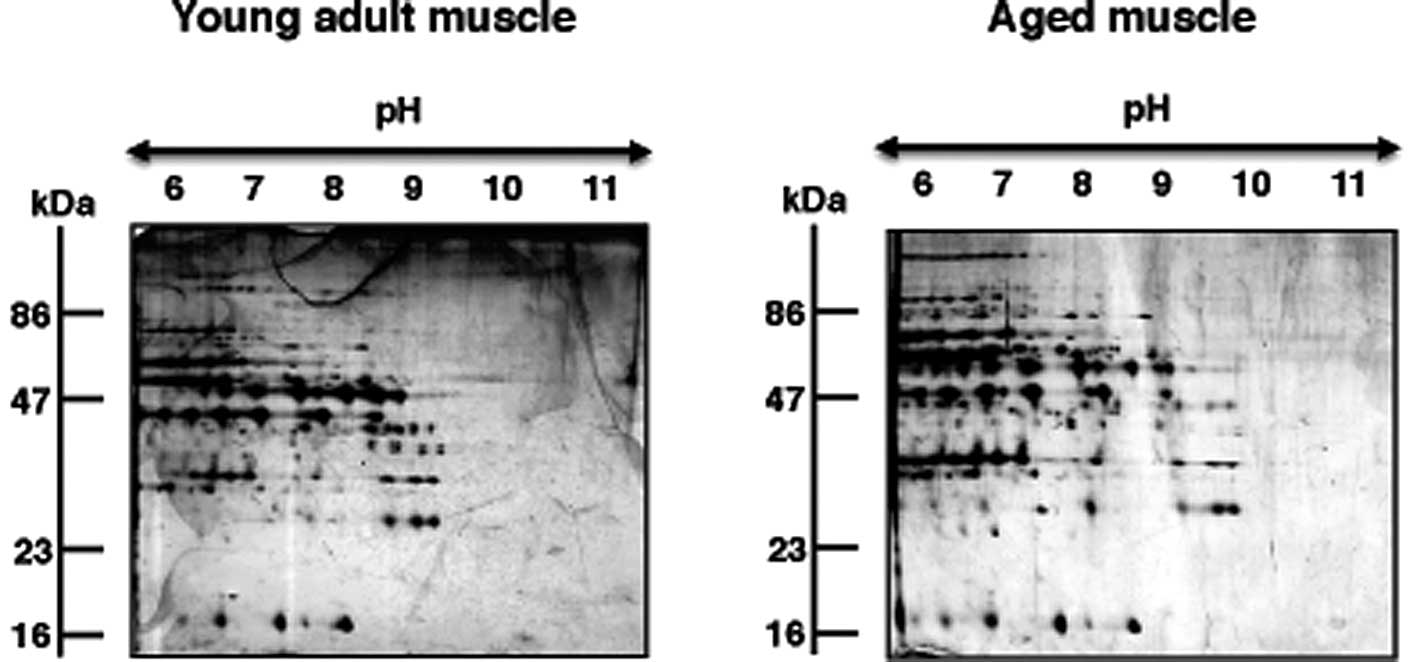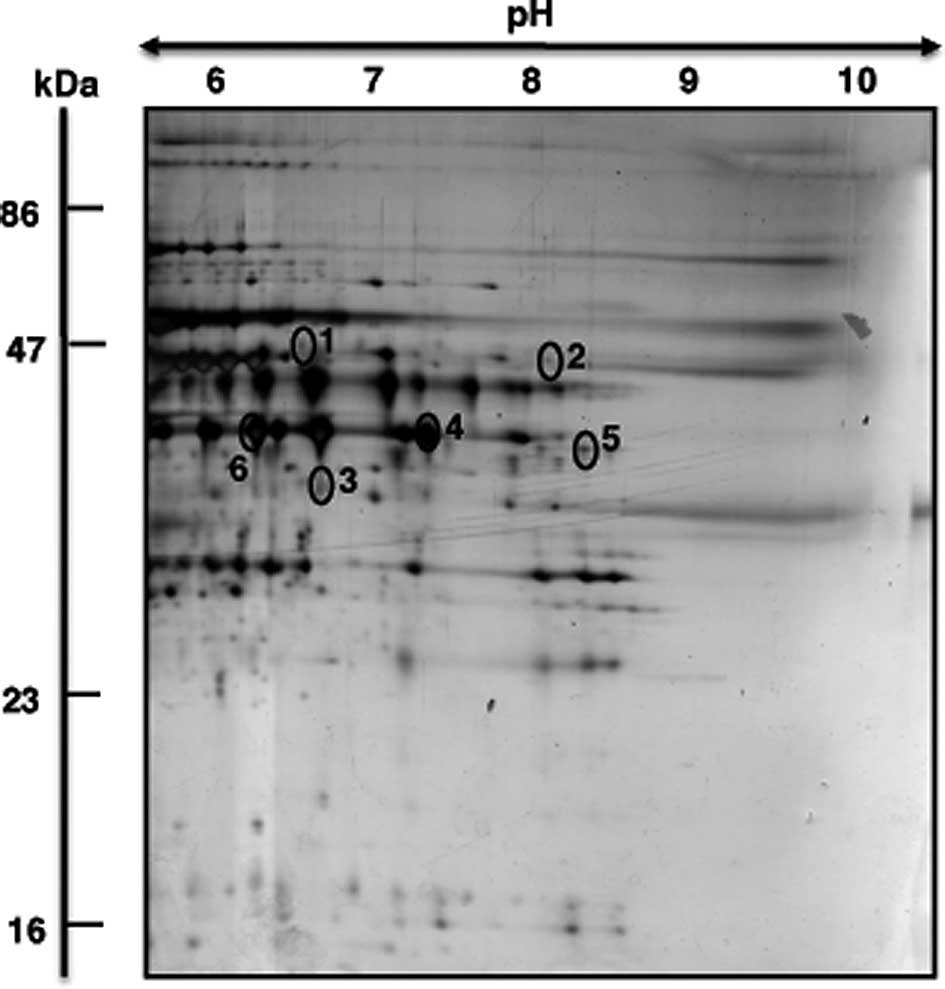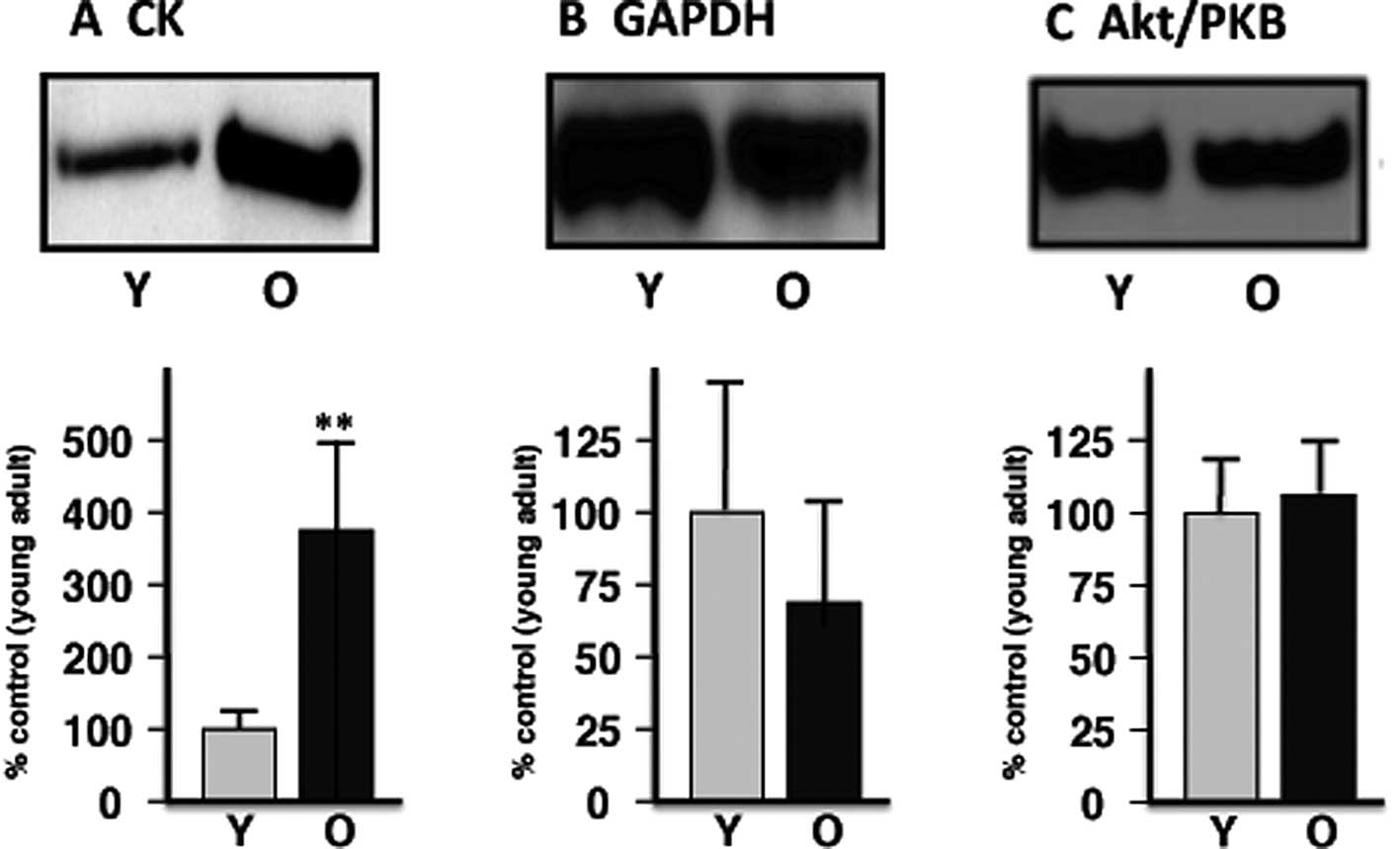|
1
|
DR ThomasSarcopeniaClin Geriatr
Med26331346201010.1016/j.cger.2010.02.012
|
|
2
|
AA VandervoortAging of the human
neuromuscular systemMuscle
Nerve251725200210.1002/mus.121511754180
|
|
3
|
LV ThompsonAge-related muscle
dysfunctionExp
Gerontol44106111200910.1016/j.exger.2008.05.00318657920
|
|
4
|
JA FaulknerLM LarkinDR ClaflinSV
BrooksAge-related changes in the structure and function of skeletal
musclesClin Exp Pharmacol
Physiol3410911096200710.1111/j.1440-1681.2007.04752.x17880359
|
|
5
|
E EdstromM AltunE BergmanH JohnsonS
KullbergV Ramirez-LeonB UlfhakeFactors contributing to
neuromuscular impairment and sarcopenia during agingPhysiol
Behav92129135200710.1016/j.physbeh.2007.05.04017585972
|
|
6
|
JG RyallJD SchertzerGS LynchCellular and
molecular mechanisms underlying age-related skeletal muscle wasting
and
weaknessBiogerontology9213228200810.1007/s10522-008-9131-018299960
|
|
7
|
WR FronteraKF ReidEM PhillipsLS
KrivickasVA HughesR RoubenoffRA FieldingMuscle fiber size and
function in elderly humans: a longitudinal studyJ Appl
Physiol105637642200810.1152/japplphysiol.90332.200818556434
|
|
8
|
MC KostekMJ DelmonicoAge-related changes
in adult muscle morphologyCurr Aging SciApril292011(Epub ahead of
print)
|
|
9
|
AA VandervoortTB SymonsFunctional and
metabolic consequences of sarcopeniaCan J Appl
Physiol2690101200110.1139/h01-00711173671
|
|
10
|
JS KimJM WilsonSR LeeDietary implications
on mechanisms of sarcopenia: roles of protein, amino acids and
antioxidantsJ Nutr
Biochem21113201010.1016/j.jnutbio.2009.06.01419800212
|
|
11
|
Y RollandC DupuyG Abellan van KanS
GilletteB VellasTreatment strategies for sarcopenia and frailtyMed
Clin North Am95427438201110.1016/j.mcna.2011.02.00821549870
|
|
12
|
BF HurleyED HansonAK SheaffStrength
training as a countermeasure to aging muscle and chronic
diseaseSports
Med41289306201110.2165/11585920-000000000-0000021425888
|
|
13
|
M PahorS KritchevskyResearch hypotheses on
muscle wasting, aging, loss of function and disabilityJ Nutr Health
Aging297100199810993575
|
|
14
|
DR ThomasLoss of skeletal muscle mass in
aging: examining the relationship of starvation, sarcopenia and
cachexiaClin Nutr26389399200710.1016/j.clnu.2007.03.00817499396
|
|
15
|
JE MorleyDiabetes, sarcopenia, and
frailtyClin Geriatr Med24455469200810.1016/j.cger.2008.03.004
|
|
16
|
P DoranJ GannonK O’ConnellK
OhlendieckProteomic profiling of animal models mimicking skeletal
muscle disordersProteomics Clin
Appl111691184200710.1002/prca.20070004221136766
|
|
17
|
P DoranP DonoghueK O’ConnellJ GannonK
OhlendieckProteomics of skeletal muscle
agingProteomics99891003200910.1002/pmic.20080036519180535
|
|
18
|
J KanskiSJ HongC SchoneichProteomic
analysis of protein nitration in aging skeletal muscle and
identification of nitrotyrosine-containing sequences in vivo by
nanoelectrospray ionization tandem mass spectrometryJ Biol
Chem2802426124266200510.1074/jbc.M501773200
|
|
19
|
J GannonL StauntonK O’ConnellP DoranK
OhlendieckPhosphoproteomic analysis of aged skeletal muscleInt J
Mol Med2233422008
|
|
20
|
J FengH XieDL MeanyLV ThompsonEA ArriagaTJ
GriffinQuantitative proteomic profiling of muscle type-dependent
and age-dependent protein carbonylation in rat skeletal muscle
mitochondriaJ Gerontol A Biol Sci Med
Sci6311371152200810.1093/gerona/63.11.113719038828
|
|
21
|
K O’ConnellP DoranJ GannonK
OhlendieckLectin-based proteomic profiling of aged skeletal muscle:
decreased pyruvate kinase isozyme M1 exhibits drastically increased
levels of N-glycosylationEur J Cell Biol877938052008
|
|
22
|
I PiecA ListratJ AlliotC ChambonRG TaylorD
BechetDifferential proteome analysis of aging in rat skeletal
muscleFASEB J1911431145200515831715
|
|
23
|
C GelfiA ViganoM RipamontiA PontoglioS
BegumMA PellegrinoB GrassiR BottinelliR WaitP CerretelliThe human
muscle proteome in agingJ Proteome
Res513441353200610.1021/pr050414x16739986
|
|
24
|
K O’ConnellJ GannonP DoranK
OhlendieckProteomic profiling reveals a severely perturbed protein
expression pattern in aged skeletal muscleInt J Mol
Med20145153200717611631
|
|
25
|
P DoranJ GannonK O’ConnellK
OhlendieckAging skeletal muscle shows a drastic increase in the
small heat shock proteins alphaB-crystallin/HspB5 and
cvHsp/HspB7Eur J Cell
Biol86629640200710.1016/j.ejcb.2007.07.003
|
|
26
|
P DoranK O’ConnellJ GannonM KavanaghK
OhlendieckOpposite pathobiochemical fate of pyruvate kinase and
adenylate kinase in aged rat skeletal muscle as revealed by
proteomic DIGE
analysisProteomics8364377200810.1002/pmic.20070047518050275
|
|
27
|
D CapitanioM VassoC FaniaM MoriggiA
ViganoP ProcacciV MagnaghiC GelfiComparative proteomic profile of
rat sciatic nerve and gastrocnemius muscle tissues in ageing by 2-D
DIGEProteomics920042020200910.1002/pmic.20070116219333999
|
|
28
|
J GannonP DoranA KirwanK OhlendieckDrastic
increase of myosin light chain MLC-2 in senescent skeletal muscle
indicates fast-to-slow fibre transition in sarcopenia of old ageEur
J Cell Biol88685700200910.1016/j.ejcb.2009.06.00419616867
|
|
29
|
P DonoghueL StauntonE MullenG ManningK
OhlendieckDIGE analysis of rat skeletal muscle proteins using
nonionic detergent phase extraction of young adult versus aged
gastrocnemius tissueJ
Proteomics7314411453201010.1016/j.jprot.2010.01.014
|
|
30
|
K O’ConnellK OhlendieckProteomic DIGE
analysis of the mitochondria-enriched fraction from aged rat
skeletal muscleProteomics955095524200919834913
|
|
31
|
I BraticA TrifunovicMitochondrial energy
metabolism and ageingBiochim Biophys
Acta1797961967201010.1016/j.bbabio.2010.01.00420064485
|
|
32
|
G PariseM De LisioMitochondrial theory of
aging in human age-related sarcopeniaInterdiscip Top
Gerontol37142156201010.1159/00031999920703060
|
|
33
|
L StauntonK O’ConnellK OhlendieckProteomic
profiling of mitochondrial enzymes during skeletal muscle agingJ
Aging Res2011908035201110.4061/2011/90803521437005
|
|
34
|
PG RighettiA CastagnaP AntonioliE
BoschettiPrefractio nation techniques in proteome analysis: the
mining tools of the third
millenniumElectrophoresis26297319200510.1002/elps.20040618915657944
|
|
35
|
P HorthCA MillerT PreckelC WenzEfficient
fractionation and improved protein identification by peptide OFFGEL
electrophoresisMol Cell
Proteomics519681974200610.1074/mcp.T600037-MCP20016849286
|
|
36
|
EM KeidelD DoschA BrunnerJ KellermannF
LottspeichEvaluation of protein loading techniques and improved
separation in OFFGEL isoelectric
focusingElectrophoresis3216591666201121563181
|
|
37
|
S FratermanU ZeigerTS KhuranaNA
RubinsteinM WilmCombination of peptide OFFGEL fractionation and
label-free quantitation facilitated proteomics profiling of
extraocular
muscleProteomics734043416200710.1002/pmic.20070038217708596
|
|
38
|
M ChevalletS LucheT RabilloudSilver
staining of proteins in polyacrylamide gelsNat
Protoc118521858200610.1038/nprot.2006.28817487168
|
|
39
|
HM McBrideM NeuspielS WasiakMitochondria:
more than just a powerhouseCurr
Biol16R551R560200610.1016/j.cub.2006.06.05416860735
|
|
40
|
DC ChanMitochondria: dynamic organelles in
disease, aging, and
developmentCell12512411252200610.1016/j.cell.2006.06.01016814712
|
|
41
|
DA HoodI IrrcherV LjubicicAM
JosephCoordination of metabolic plasticity in skeletal muscleJ Exp
Biol20922652275200610.1242/jeb.0218216731803
|
|
42
|
U SchlattnerM Tokarska-SchlattnerT
WallimannMitochondrial creatine kinase in human health and
diseaseBiochim Biophys
Acta1762164180200610.1016/j.bbadis.2005.09.00416236486
|
|
43
|
NV DudkinaR KourilK PetersHP BraunEJ
BoekemaStructure and function of mitochondrial
supercomplexesBiochim Biophys
Acta1797664670201010.1016/j.bbabio.2009.12.01320036212
|
|
44
|
K OhlendieckProteomics of skeletal muscle
glycolysisBiochim Biophys
Acta180420892101201010.1016/j.bbapap.2010.08.00120709194
|
|
45
|
A HionaC LeeuwenburghThe role of
mitochondrial DNA mutations in aging and sarcopenia: implications
for the mitochondrial vicious cycle theory of agingExp
Gerontol432433200810.1016/j.exger.2007.10.00117997255
|
|
46
|
B ChabiV LjubicicKJ MenziesJH HuangA
SaleemDA HoodMitochondrial function and apoptotic susceptibility in
aging skeletal muscleAging
Cell7212200810.1111/j.1474-9726.2007.00347.x18028258
|
|
47
|
PA FigueiredoSK PowersRM FerreiraHJ
AppellJA DuarteAging impairs skeletal muscle mitochondrial
bioenergetic functionJ Gerontol A Biol Sci Med
Sci642133200910.1093/gerona/gln04819196905
|
|
48
|
D PetteThe adaptive potential of skeletal
muscle fibersCan J Appl
Physiol27423448200210.1139/h02-02312442355
|
|
49
|
P DonoghueP DoranK WynneK PedersenMJ DunnK
OhlendieckProteomic profiling of chronic low-frequency stimulated
fast
muscleProteomics734173430200710.1002/pmic.20070026217708595
|
|
50
|
L StauntonH JockuschC WiegandT AlbrechtK
OhlendieckIdentification of secondary effects of hyperexcitability
by proteomic profiling of myotonic mouse muscleMol
Biosyst724802489201110.1039/c1mb05043e21629954
|
|
51
|
MA AlnaqeebG GoldspinkChanges in fiber
type, number and diameter in developing and ageing skeletal muscleJ
Anat153314519873429325
|
|
52
|
MR DeschenesEffects of aging on muscle
fiber type and sizeSports
Med34809824200410.2165/00007256-200434120-0000215462613
|
|
53
|
J LexellCC TaylorM SjostromWhat is the
cause of the ageing atrophy? Total number, size and proportion of
different fiber types studied in whole vastus lateralis muscle from
15- to 83-year-old menJ Neurol Sci842752941988
|
|
54
|
J LexellHuman aging, muscle mass, and
fiber type compositionJ Gerontol A Biol Sci Med Sci5011161995
|
|
55
|
O DelbonoExpression and regulation of
excitation-contraction coupling proteins in aging skeletal
muscleCurr Aging SciApril292011(Epub ahead of print)
|
|
56
|
E ProchniewiczLV ThompsonDD
ThomasAge-related decline in actomyosin structure and functionExp
Gerontol42931938200710.1016/j.exger.2007.06.01517706387
|
|
57
|
CE LeeA McArdleRD GriffithsThe role of
hormones, cytokines and heat shock proteins during age-related
muscle lossClin
Nutr26524534200710.1016/j.clnu.2007.05.00517590243
|
|
58
|
E MarzettiC LeeuwenburghSkeletal muscle
apoptosis, sarcopenia and frailty at old ageExp
Gerontol4112341238200610.1016/j.exger.2006.08.01117052879
|
|
59
|
DW RussIR LanzaThe impact of old age on
skeletal muscle energetics: supply and demandCurr Aging
Sci2011Apr29(in press)
|
|
60
|
K O’ConnellJ GannonP DoranK
OhlendieckReduced expression of sarcalumenin and related
Ca2+-regulatory proteins in aged rat skeletal muscleExp
Gerontol43958961200818762239
|
|
61
|
C BruleE DargelosR DialloA ListratD
BechetP CottinS PoussardProteomic study of calpain interacting
proteins during skeletal muscle
agingBiochimie9219231933201010.1016/j.biochi.2010.09.00320850499
|
|
62
|
P LorenzonE BandiF de GuarriniT
PietrangeloR SchaferM ZweyerA WernigF RuzzierAgeing affects the
differentiation potential of human myoblastsExp
Gerontol3915451554200410.1016/j.exger.2004.07.00815501025
|
|
63
|
AC KayaniJP MortonA McArdleThe
exercise-induced stress response in skeletal muscle: failure during
agingAppl Physiol Nutr
Metab3310331041200810.1139/H08-08918923581
|
|
64
|
T LangT StreeperP CawthonK BaldwinDR
TaaffeTB HarrisSarcopenia: etiology, clinical consequences,
intervention, and assessmentOsteoporos
Int21543559201010.1007/s00198-009-1059-y19779761
|
|
65
|
AJ Cruz-JentoftJP BaeyensJM BauerY BoirieT
CederholmF LandiFC MartinJP MichelY RollandSM SchneiderSarcopenia:
European consensus on definition and diagnosis: report of the
European working group on sarcopenia in older peopleAge
Ageing39412423201010.1093/ageing/afq03420392703
|
|
66
|
AJ Cruz-JentoftF LandiE TopinkovaJP
MichelUnderstanding sarcopenia as a geriatric syndromeCurr Opin
Clin Nutr Metab
Care1317201010.1097/MCO.0b013e328333c1c119915458
|
|
67
|
M PahorT ManiniM CesariSarcopenia:
clinical evaluation, biological markers and other evaluation toolsJ
Nutr Health Aging13724728200910.1007/s12603-009-0204-919657557
|


















